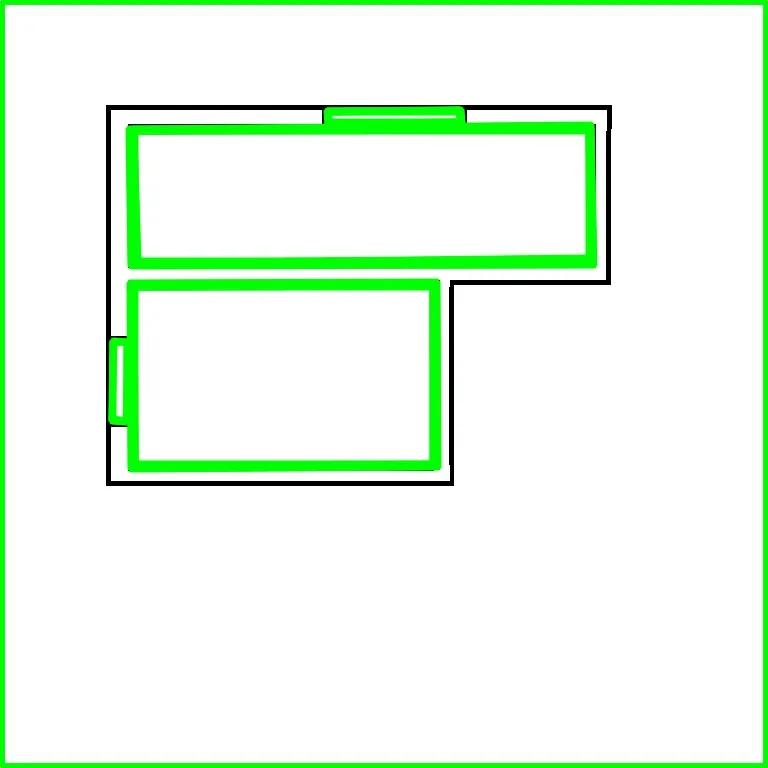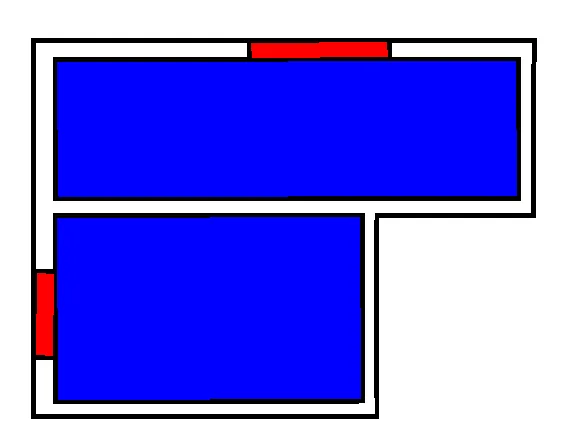我正在使用javacv包(Opencv)开发组件识别项目。我使用了一种方法来返回图像上的一组矩形作为“CvSeq”。我需要知道以下几点:
- 如何从方法输出(从CvSeq)中获取每个矩形?
- 如何访问矩形的长度和宽度?
这是返回矩形的方法:
public static CvSeq findSquares( final IplImage src, CvMemStorage storage)
{
CvSeq squares = new CvContour();
squares = cvCreateSeq(0, sizeof(CvContour.class), sizeof(CvSeq.class), storage);
IplImage pyr = null, timg = null, gray = null, tgray;
timg = cvCloneImage(src);
CvSize sz = cvSize(src.width() & -2, src.height() & -2);
tgray = cvCreateImage(sz, src.depth(), 1);
gray = cvCreateImage(sz, src.depth(), 1);
pyr = cvCreateImage(cvSize(sz.width()/2, sz.height()/2), src.depth(), src.nChannels());
// down-scale and upscale the image to filter out the noise
cvPyrDown(timg, pyr, CV_GAUSSIAN_5x5);
cvPyrUp(pyr, timg, CV_GAUSSIAN_5x5);
cvSaveImage("ha.jpg", timg);
CvSeq contours = new CvContour();
// request closing of the application when the image window is closed
// show image on window
// find squares in every color plane of the image
for( int c = 0; c < 3; c++ )
{
IplImage channels[] = {cvCreateImage(sz, 8, 1), cvCreateImage(sz, 8, 1), cvCreateImage(sz, 8, 1)};
channels[c] = cvCreateImage(sz, 8, 1);
if(src.nChannels() > 1){
cvSplit(timg, channels[0], channels[1], channels[2], null);
}else{
tgray = cvCloneImage(timg);
}
tgray = channels[c]; // try several threshold levels
for( int l = 0; l < N; l++ )
{
// hack: use Canny instead of zero threshold level.
// Canny helps to catch squares with gradient shading
if( l == 0 )
{
// apply Canny. Take the upper threshold from slider
// and set the lower to 0 (which forces edges merging)
cvCanny(tgray, gray, 0, thresh, 5);
// dilate canny output to remove potential
// // holes between edge segments
cvDilate(gray, gray, null, 1);
}
else
{
// apply threshold if l!=0:
cvThreshold(tgray, gray, (l+1)*255/N, 255, CV_THRESH_BINARY);
}
// find contours and store them all as a list
cvFindContours(gray, storage, contours, sizeof(CvContour.class), CV_RETR_LIST, CV_CHAIN_APPROX_SIMPLE);
CvSeq approx;
// test each contour
while (contours != null && !contours.isNull()) {
if (contours.elem_size() > 0) {
approx = cvApproxPoly(contours, Loader.sizeof(CvContour.class),storage, CV_POLY_APPROX_DP, cvContourPerimeter(contours)*0.02, 0);
if( approx.total() == 4
&&
Math.abs(cvContourArea(approx, CV_WHOLE_SEQ, 0)) > 1000 &&
cvCheckContourConvexity(approx) != 0
){
double maxCosine = 0;
//
for( int j = 2; j < 5; j++ )
{
// find the maximum cosine of the angle between joint edges
double cosine = Math.abs(angle(new CvPoint(cvGetSeqElem(approx, j%4)), new CvPoint(cvGetSeqElem(approx, j-2)), new CvPoint(cvGetSeqElem(approx, j-1))));
maxCosine = Math.max(maxCosine, cosine);
}
if( maxCosine < 0.2 ){
cvSeqPush(squares, approx);
}
}
}
contours = contours.h_next();
}
contours = new CvContour();
}
}
return squares;
}
这是我使用的示例原始图像:



for cnt in contours行)。然后我检查它是否为矩形。所以在所有轮廓中,有4个作为矩形。因此,当您访问它们时,会给出4个轮廓。您必须访问它们中的每一个。我不知道Java中是什么样子。早些时候,在Python中,它是一个cvSeq对象,并且有cvSeq.hnext()来逐个访问每个轮廓。现在它是一个列表。因此,您必须找出Java中的情况。 - Abid Rahman K